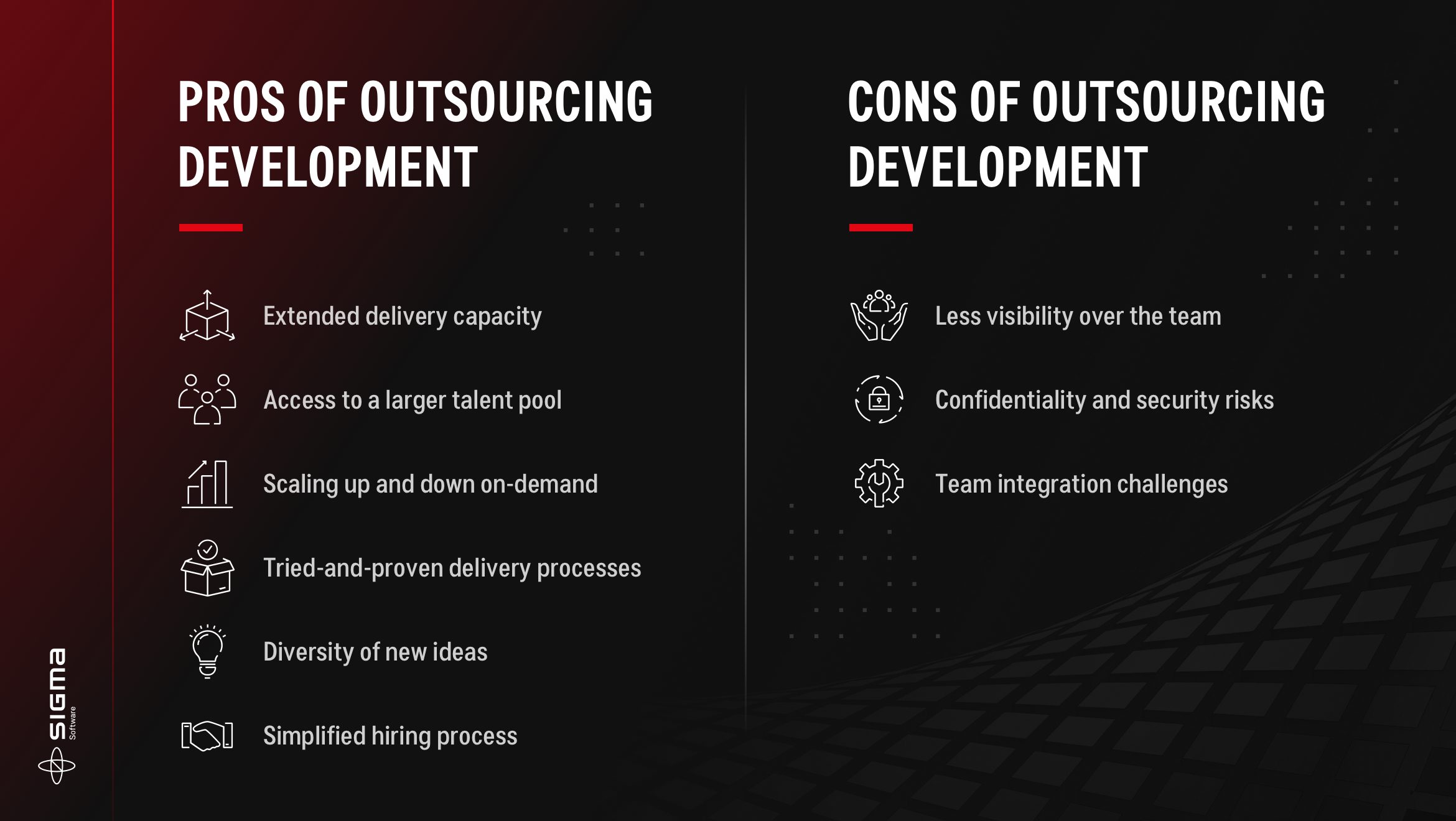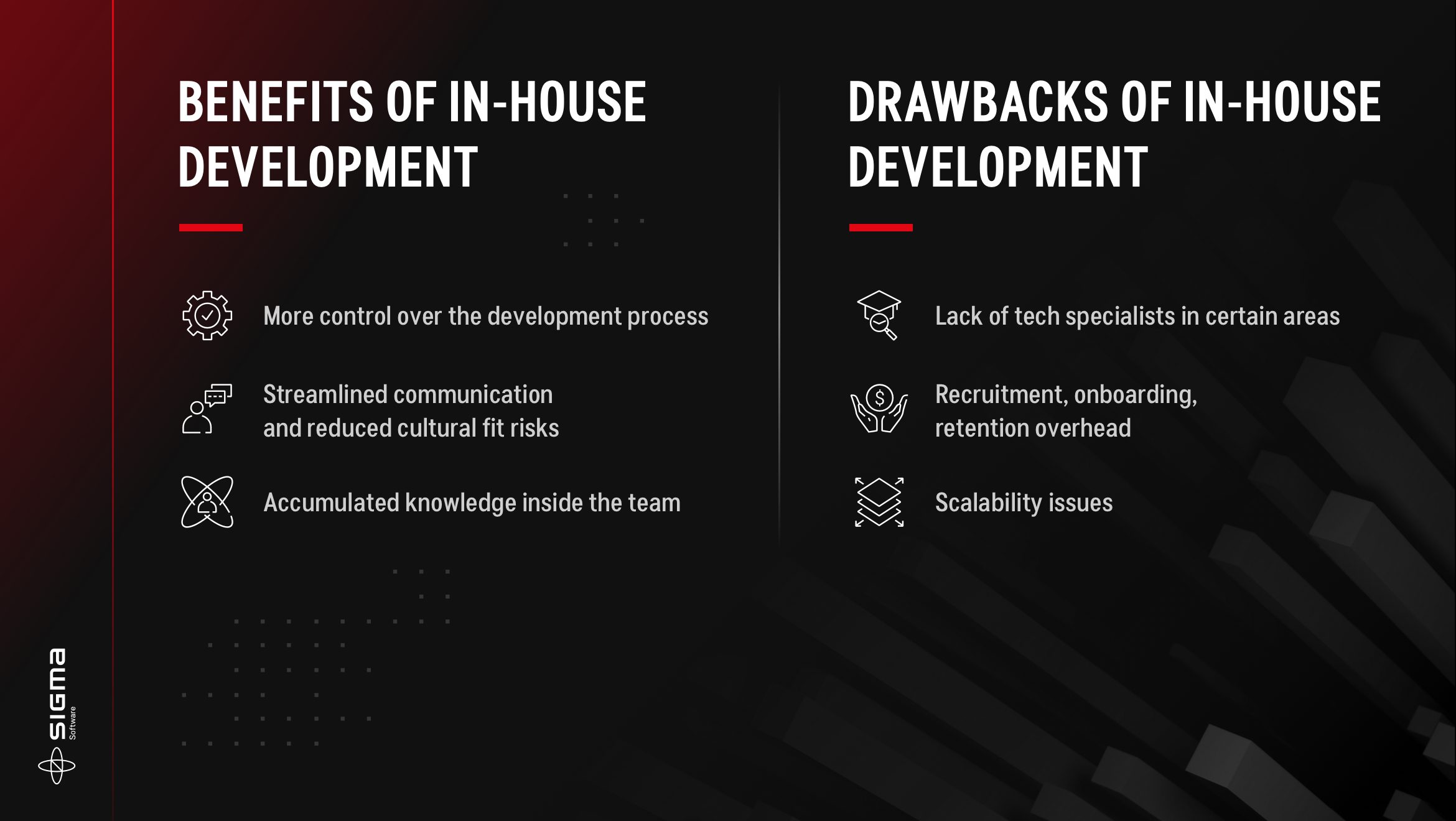In-house development vs outsourcing models: What’s the difference?
Outsourcing software development pros and cons
Outsourcing software development examples
When to choose the outsourced team model?
Pros and cons of in-house development
In-house software development examples
When to choose the in-house team model?
Hybrid approach: get the best of both worlds
Why do our clients choose Sigma Software as their outsourcing partner?































